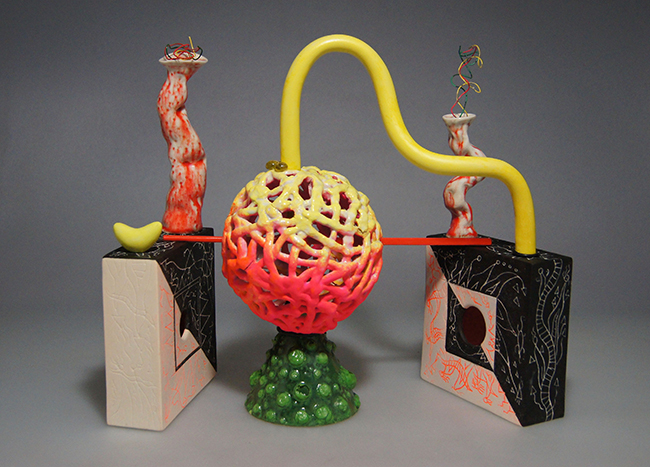As the year 2024 comes to an end, it is the perfect time to reflect on the artists contributing to the art world. Among them is Sylvia Nagy, a multidisciplinary artist whose work transcends the boundaries of ceramics, technology, and creative philosophy. With an academic start at the Moholy-Nagy University in Budapest, where she earned her MFA in Silicet Industrial Technology and Art, Nagy’s career is a testament to the harmony of precision and imagination. Her journey continued at Parsons School of Design in New York, where she not only taught but designed a course on mold-making, sharing her technical mastery with future creatives.

Her career has taken her across the globe, with residencies in countries like Japan, China, Germany, the USA, and Hungary. These experiences enriched her perspective, each location adding layers to her creative process. Nagy’s ceramics have been exhibited in museums across France, Spain, Korea, and more, underscoring her international appeal. Beyond her work in ceramics, her interests in dance, photography, and fashion bring depth to her artistic voice.
One of Nagy’s standout works, Love in Yellow and Red, captures the delicate balance between strength and vulnerability. For her, ceramics embody the paradox of human existence: resilient yet breakable. This concept resonates with her time in New York City, a hub of cultural diversity and artistic energy. Nagy sees the city as a microcosm of global interconnectedness, and this vibrant dynamic influences her creative output.
Her latest explorations feature cubes and organic shapes, which she uses to probe the contradictions of life. Geometric precision represents stability, while fluid, organic forms suggest unpredictability. By contrasting monochromatic tones with bursts of color like yellow, Nagy emphasizes the interplay of opposites. This duality recalls the yin-yang philosophy, reflecting her quest for equilibrium in an ever-changing world.

Nagy’s artistic philosophy revolves around the idea of vibration and frequency—whether found in sound, light, or emotion. She views life as a tapestry of interconnected waves, a belief she incorporates into her ceramics. Through color and texture, she aims to evoke these unseen rhythms, creating works that speak to the harmony and tension inherent in existence.
In Love in Yellow and Red, she explores duality through the juxtaposition of a structured cube and an openwork ball. Yellow, a recurring motif in her art, symbolizes vitality and optimism, imbuing her pieces with energy. For Nagy, color transcends visual appeal; it carries emotional and vibrational significance, encouraging viewers to engage on a deeper level.
Nagy’s ceramics do more than appeal to the eye—they tell stories about our shared human experiences. Her works delve into themes like migration, insecurity, and the pursuit of balance in a turbulent world. The fragility of ceramics mirrors the precariousness of modern life, yet her use of bold colors and intricate designs conveys a sense of hope and resilience.
Her storytelling isn’t confined to narrative forms; it’s woven into her materials and techniques. By pushing the limits of ceramic design, she creates pieces that encourage quiet reflection, offering a dialogue between the viewer and the work. Her art bridges the personal and the universal, confronting uncertainty while illuminating possibilities.
Nagy’s career is marked by her willingness to embrace new challenges. Her ability to merge technical skill with conceptual depth makes her work both accessible and profound. Residencies and teaching roles have shaped her creative journey, allowing her to absorb diverse cultural influences and share her knowledge widely.
Her focus on geometric and organic forms mirrors the constant push and pull of life—stability versus chaos, structure versus spontaneity. By exploring these dynamics, Nagy invites viewers to question their own perceptions and find meaning in the tension between opposites.
For Sylvia Nagy, art is more than a craft; it’s a way of navigating life’s uncertainties. She sees creativity as a beacon, offering clarity and inspiration in difficult times. Her ceramics reflect this philosophy, blending strength with delicacy to resonate with the complexities of human experience.
As 2024 comes to a close, Nagy’s work stands as a reminder of art’s ability to connect us to one another and to the broader universe. Her exploration of vibrations, frequencies, and emotions transforms ceramics into a medium of connection and introspection. In a world full of contradictions, her art offers a vision of balance, reminding us that even in fragility, there is light and resilience.

